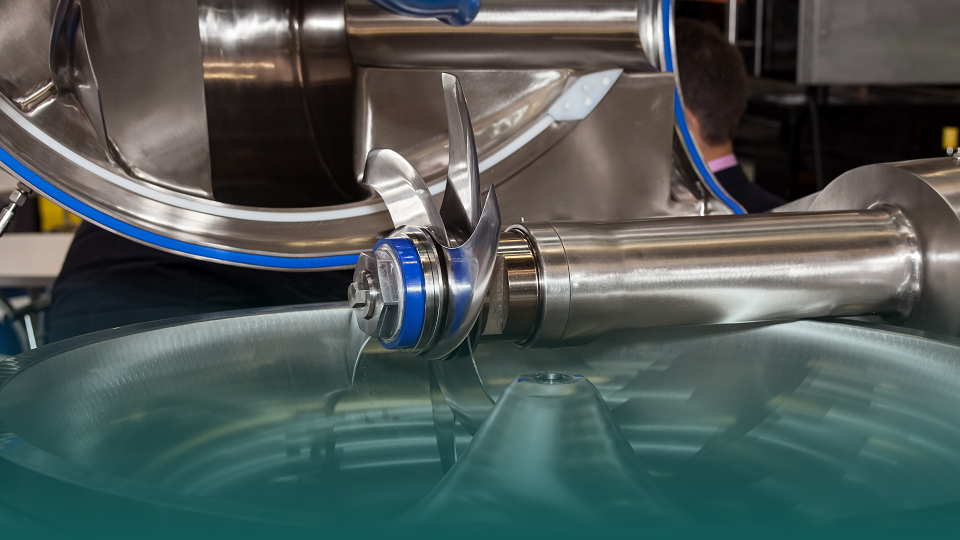PROJECTS COMPLETED THROUGH THE USE OF HPC (SUCCESS STORIES)
Are you a scientist or an entrepreneur? Are you conducting research or working on a new product project? Would you like to perform calculations, tests, analyse vast amounts of data, or create visualisations? You need massive computational power for that. Does that mean you have to invest in specialised hardware or scientific software? No. Just contact the National Competence Centre in HPC and learn how you can leverage the Polish and European network of computer clusters.
On this website, we showcase examples of projects carried out with the help of supercomputers located in the computing centres belonging to the National Competence Centre in HPC. If you are looking for similar solutions or expert support, you are in the right place.

SUCCESS STORIES. Examples of projects implemented using supercomputers and the support of experts from the National Competence Centre in HPC

AVIATION: Numerical aerodynamic and aeroacoustic analysis of flow control methods
PROJECT OBJECTIVE: Improving the aerodynamic and/or aeroacoustic characteristics of streamlined structures using numerical studies employing passive and active flow control methods (e.g.: sheet, bar and fluidic vortex generators and perforated walls).
MEDICINE: Mortality prediction and pathology detection in thoracic imaging screening using deep machine learning techniques
PROJECT OBJECTIVE: The aim of the project is to demonstrate that with the help of Trustworthy AI techniques applied to medical image analysis in screening, early detection of pathological changes and assessment of risk of death is possible. The main tasks of the project include the development and validation of artificial intelligence models performing the above tasks and the development of methods for the explainability of model results, in particular with regard to the influence of low-level and high-level image information.


ENERGETICS: Preparation of reference databases of the Direct Numerical Simulations class for the design of new nuclear technologies and nuclear safety applications
PROJECT OBJECTIVE: Generation of two Direct Numerical Simulations (DNS) class reference databases for two physical phenomena occurring in nuclear reactors:
- pressurised thermal shock (PTS)
- mixing of coolant in fuel cassettes.
METEOROLOGY: "Do you know what are you breathing in?" Information and education campaign for cleaner air LIFE – MAPPINGAIR/PL
PROJECT OBJECTIVE: One of the tasks of the project is operational forecasting of air quality at high temporal and spatial resolution (forecast range: 72 h, temporal resolution: 1 h, spatial resolution for Poland domain: 4 km, for 1 km subdomain: 50 m), using WRF-Chem, EMEP and uEMEP forecasting models, and making forecasts operationally available to the public.


MEDICINE: Agent modelling for the MOCOS group – Modelling Coronavirus Spread
PROJECT OBJECTIVE: Analysing the risk, making forecasts for the following days and weeks, providing recommendations for COVID-19 eradication. Supporting public institutions in bringing the epidemic to a state of extinction (sub-critical), i.e. reducing the scale of virus reproduction to a level that is negligible from the point of view of public safety.
PHYSICS: Electron structure calculations of disordered TiO2 rutile on a vector computer
PROJECT OBJECTIVE: The main objective of the project is to carry out electron structure calculations of rutile (TiO2) on the NEC SX-Aurora TSUBASA vector computer in two variants:
(i) for a system not affected by structural defects and
(ii) for a system containing defects in the form of oxygen vacancies.
An existing implementation of the equation of motion method was used to complete the task.
The specific objective was to adapt the programme to work efficiently on the NEC vector architecture, optimise it, and perform performance and scaling tests on the new version of the programme.


MEDICINE: COVID-19 epidemiological model
PROJECT OBJECTIVE: Provision of epidemiological forecasts and analysis of the epidemic situation in the country. The results of the research were presented to state institutions responsible for health care, epidemic surveillance and administrative decisions affecting social life in the country. The forecasts and analyses are formulated on the basis of simulations carried out using software developed at the ICM UW in previous years and intensively developed to meet the requirements of the changing epidemic-administrative situation.
METEOROLOGY: Non-commercial and commercial applications of numerical meteorological forecasts
PROJECT OBJECTIVE: Identifying the needs of meteorological forecasts’ users and then commercialising these forecasts by:
- creation of personalised products dedicated to specific user groups,
- commercial provision of archived and current forecasts,
- development of forecast access channels: website and mobile application,
- the development of forecasts with a view to their application in areas of utility to society and state security.


PHYSICS/CFD: Numerical analysis of vertical axis wind turbines
PROJECT OBJECTIVE: Currently, numerical fluid mechanics methods are a popular tool for aerodynamic studies. The purpose of this project was analysis of the aerodynamic loads of a Darrieus-type rotor andand development and validation of the author’s numerical model for the analysis of rotor aerodynamic performance.
PHYSICS/CFD: Use of high computing power for design analysis and optimisation of large-scale industrial mixers with consideration of thermal-fluid processes
PROJECT OBJECTIVE: Development of mathematical models of mixing processes and their implementation in commercial and open source numerical software. During the project, the models were validated and ultimately used during the design of the optimised mixers. Design elements directly involved in the mixing process, such as mixing/dispersing discs, anchors and elements supporting the process, were optimised. In addition to the flow processes, both thermal processes resulting from the friction of the mixed products and the heat input from the heating/cooling systems installed in the unit were implemented in the models.


PHYSICS/CFD: Performance tests of the CIŚ supercomputer in fire safety simulations
PROJECT OBJECTIVE: The analysis of wind-fire events requires considering the simultaneous interaction of wind and the variable development of the fire over time. To obtain statistically valid results, it is necessary to perform dozens of simulations considering different wind directions and speeds. This, in turn, requires significant computational resources and scalable computational fluid dynamics (CFD) models. As part of the tests, actions were planned and carried out to determine the optimal size of the computing unit for CFD simulations of wind and smoke flow in the garage model. These actions allowed for the optimal selection of the number of scenarios, numerical grid size, and the method of simulating thermal radiation.